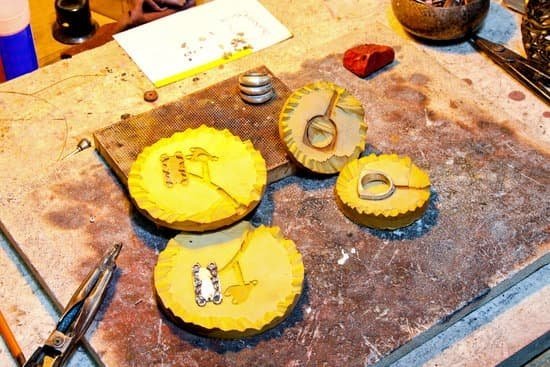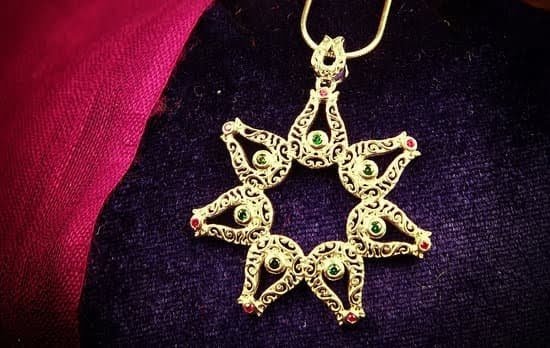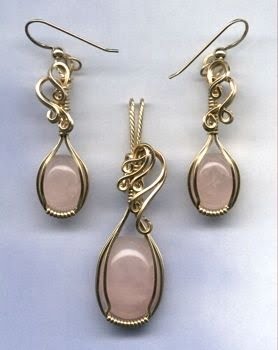When it comes to jewelry, diamonds have always held a special place in people’s hearts. The allure and prestige associated with these precious gemstones are undeniable, making them a top choice for luxury adornments. Diamonds have become synonymous with opulence and elegance, adorning the fingers, necks, and ears of those seeking to showcase their luxurious tastes. Beyond their aesthetic appeal, diamonds also carry a rich historical significance in the world of jewelry making.
Throughout history, diamonds have been prized for their rarity and beauty. From ancient civilizations to modern times, these dazzling gems have captivated the human imagination and symbolized wealth and power. They have graced the crowns of kings and queens and adorned the most glamorous icons of our time. The association between diamonds and luxury has only grown stronger over the years as they continue to be coveted by collectors, celebrities, and jewelry enthusiasts alike.
But what makes diamonds stand out from other gemstones? It all comes down to their intrinsic value and sparkle. Diamonds possess characteristics that set them apart – brilliance, durability, and fire. Their unique ability to reflect light allows them to dazzle at every turn. This innate beauty explains why they have become such an integral part of celebrating milestones and special occasions.
In this article, we will explore whether having diamonds on jewelry is truly worth it. We will delve into their value in terms of price, investment potential, symbolism in different cultures, as well as evaluating diamond quality through the 4Cs framework (carat weight, cut grade, color grade, clarity grade).
We will also take a look at alternatives to diamonds that could offer comparable beauty without breaking the bank. Lastly, we will consider ethical concerns relating to diamond sourcing and discuss maintenance tips to ensure longevity for your cherished pieces.
Whether you’re considering purchasing diamond jewelry or simply intrigued by their enduring popularity in fashion history – join us on this exploration through the world of diamonds, as we seek to answer the question: Is it worth having diamonds on jewelry?
The Value of Diamonds
Analyzing the value of diamonds can be a complex task, as it involves various factors that contribute to their worth. Many people question whether diamonds are really worth the high price they command in the market. To determine whether diamonds are a worthwhile investment, it is essential to consider these key factors.
One of the primary considerations when assessing the value of a diamond is its rarity. Diamonds are formed deep within the Earth’s mantle under extreme pressure and heat, making them rare and difficult to obtain. The scarcity of diamonds drives up their price, as demand often surpasses supply. Additionally, the extraction and mining processes are labor-intensive and expensive, contributing to the overall cost.
Another important factor that influences diamond pricing is its quality. The Gemological Institute of America (GIA) has established a standard grading system known as the 4Cs (carat weight, cut grade, color grade, and clarity grade) to assess diamond quality. Each of these factors plays a crucial role in determining a diamond’s value. For example, larger carat weights tend to increase the price significantly, while superior cut grades enhance a diamond’s brilliance and sparkle.
Fluctuations in the diamond market also impact its worth. Like any other commodity or investment, diamonds are subject to price fluctuations based on supply and demand dynamics. Economic conditions, global events, and shifts in consumer preferences can affect the prices of diamonds in both positive and negative ways. Therefore, before investing in diamond jewelry as an asset or considering it for resale purposes, it is vital to understand these market trends.
The Symbolism of Diamonds in Jewelry
Diamonds hold a profound symbolism in various cultures across the globe. Throughout history, diamonds have been revered as a symbol of wealth, power, and status. In many cultures, they are seen as a representation of eternal love and commitment. The symbolism attached to diamonds makes them a popular choice for engagement rings and other jewelry pieces that mark significant milestones and special occasions.
Symbolism in Various Cultures
Diamonds have been cherished in different cultures for centuries, each associating its own unique symbolism with the precious gemstone. In ancient Hindu culture, diamonds were believed to bring good fortune and protect against malevolent forces. They were also considered to be a symbol of purity, strength, and clarity.
In Western societies, diamonds became closely associated with engagement rings during the 20th century due to successful marketing campaigns by diamond companies. Today, diamonds are widely recognized as a symbol of love and commitment in Western culture.
In Chinese culture, diamonds represent longevity and prosperity. They are often given as gifts during important celebrations such as weddings or birthdays.
The Emotional Significance
Beyond cultural symbolism, diamonds also carry deep emotional significance for many people. In the context of romantic relationships, diamond engagement rings serve as a tangible symbol of love and commitment between partners. The durability and timelessness of diamonds further embody the lasting nature of their bond.
Moreover, diamond jewelry is often passed down through generations within families, becoming cherished heirlooms that carry sentimental value beyond their monetary worth. The emotional attachment individuals develop for their diamond jewelry adds to their perceived worth.
Celebrating Milestones and Special Occasions
Diamonds are frequently chosen to commemorate important milestones in life or celebrate special occasions. Be it an anniversary gift or an acknowledgment of personal accomplishments such as graduations or promotions, diamond jewelry represents these significant moments with elegance and sophistication.
Many individuals choose to purchase diamond jewelry as a form of self-expression, wearing it as a symbol of their individuality or personal achievements. These pieces serve as a constant reminder of the wearer’s journey and accomplishments, making them cherished possessions.
The symbolism attached to diamonds in various cultures, along with the emotional significance they hold, makes them an appealing choice for jewelry that carries deep meaning and serves as a celebration of life’s important moments.
Diamond Quality
Evaluating the quality of diamonds is essential when considering whether it is worth having diamonds on jewelry. This assessment is typically done through an evaluation of the 4Cs: carat, cut, color, and clarity. Each of these factors plays a crucial role in determining the value and overall appearance of a diamond.
- Carat: The carat weight of a diamond refers to its size and mass. Generally, larger diamonds are more valuable because they are rarer. However, carat weight should not be the sole determinant of a diamond’s worth. Other aspects such as cut, color, and clarity also contribute significantly to its quality.
- Cut: The cut of a diamond refers to its proportions, symmetry, and polish. It affects how light interacts with the stone and determines its brilliance and sparkle. Well-cut diamonds reflect light effectively, resulting in a dazzling appearance. Diamonds that are poorly cut may appear dull or lackluster even if they have excellent clarity or color grades.
- Color: Diamonds can range from colorless to various shades of yellow or brown. The Gemological Institute of America (GIA) established a grading scale for diamond colors ranging from D (colorless) to Z (light yellow or brown). Colorless diamonds are highly valued because they allow maximum light refraction, enhancing their sparkle.
- Clarity: Diamond clarity refers to the presence or absence of internal flaws (inclusions) or external blemishes. A diamond with fewer imperfections is considered higher in clarity grade and therefore more valuable. It is important to note that most inclusions are not visible to the naked eye unless there is a significant impact on the stone’s beauty or durability.
When evaluating diamond quality based on the 4Cs, it is crucial to strike a balance between these characteristics depending on personal preferences and budget constraints. While certain individuals prioritize carat weight for an impressive size, others may focus on a well-cut diamond to maximize brilliance. Ultimately, the combination of these factors determines the overall worth and desirability of a diamond in jewelry.
Ensuring that customers fully understand the evaluation criteria for diamonds empowers them to make informed choices when selecting jewelry. With this knowledge, they can determine which factors are most important to them and find jewelry pieces with diamonds that align with their personal preferences and values.
Alternatives to Diamonds
Presents a Variety of Gemstones as Alternatives
While diamonds may be the most popular choice for jewelry, there are plenty of stunning alternatives that can offer a unique and eye-catching look. From vibrant colored gemstones to lustrous pearls, there is a wide range of options available for those seeking something different. Some popular alternatives to diamonds include sapphires, rubies, emeralds, and tanzanite, each with its own distinct beauty and appeal.
Sapphires, often associated with royalty and wealth, come in various colors such as blue, pink, yellow, and even black. They are known for their durability and ability to stand up to everyday wear. Rubies, on the other hand, boast a bold red hue symbolizing love and passion. These gemstones are highly valued for their rarity and vibrancy.
Emeralds are admired for their mesmerizing green color and have been treasured throughout history. Their lush hue conveys feelings of renewal and growth. Lastly, tanzanite is an exquisite gemstone found only in one location in Tanzania. Its blue-violet color can rival or even surpass the allure of some diamonds.
Comparing Characteristics and Value
When considering alternative gemstones versus diamonds, it is important to take into account their unique characteristics and value proposition. While diamonds are prized for their hardness on the Mohs scale rating of 10 out of 10, certain gemstones like pearls or opals may require more gentle care due to their relative softness. However, these softer gems can still provide stunning beauty when set properly in jewelry.
In terms of value comparison, alternative gemstones can offer an excellent cost-effective option. Due to factors such as availability or popularity within the market, many alternative gemstones can be priced more affordably than diamonds while still providing extraordinary aesthetic appeal.
Making the Right Choice for You
Ultimately, the decision to opt for an alternative gemstone or stick with diamonds rests on personal preference and individual circumstances. While diamonds have long been revered for their timeless elegance and versatility, alternative gemstones offer a chance to create a unique piece that reflects one’s distinct style and personality.
Whether it be an heirloom bracelet adorned with sapphires or an engagement ring featuring a vibrant ruby, choosing an alternative gemstone can be an exciting and meaningful way to express oneself through jewelry. The key is to consider factors such as personal taste, budget, durability requirements, and symbolic meanings associated with different gemstones.
The Ethical Dilemma
In recent years, the issue of ethical sourcing has become increasingly important in the jewelry industry. This section explores the ethical dilemma surrounding diamonds, specifically the problem of blood diamonds, and discusses the options available for those seeking conflict-free diamonds.
Blood diamonds, also known as conflict diamonds, are mined in war zones and sold to finance armed conflict against governments. These unethical practices have raised concerns among consumers who want to ensure that their purchases do not contribute to human rights abuses or environmental degradation.
The Kimberley Process Certification Scheme was established in 2003 as an international effort to prevent the trade of blood diamonds. However, critics argue that the certification process has loopholes and does not go far enough in guaranteeing ethical sourcing.
The jewelry industry has responded to these concerns by offering conflict-free diamond options. Many reputable jewelers now provide guarantees that their diamonds are sourced from mines that adhere to strict ethical standards. These conflict-free options give consumers peace of mind knowing that their purchase supports responsible mining practices and upholds human rights.
| Key Points | Data/Information |
|---|---|
| Blood Diamond Definition | Blood diamonds are mined in war zones and sold to finance armed conflict against governments. |
| Kimberley Process Certification Scheme | The international effort established in 2003 to prevent the trade of blood diamonds. |
| Ethical Alternatives | Reputable jewelers now offer conflict-free diamond options that adhere to strict ethical standards. |
While it is commendable that many jewelers are taking steps to ensure ethical sourcing, it is important for consumers to be informed about the specific practices and origins of the diamonds they purchase. Some jewelers even offer complete transparency, providing information on the mine where a particular diamond was sourced and its journey from mine to market. By choosing jewelry with ethically sourced diamonds, consumers can support responsible mining and make a positive impact on communities in diamond-producing regions.
In addition to conflict-free options, there are now alternative choices available for ethical diamond buyers. Lab-grown diamonds, also known as synthetic or cultured diamonds, have gained popularity as they are created in controlled laboratory environments without any involvement in unethical practices.
These diamonds have the same physical and chemical properties as natural diamonds but are typically priced lower. The growing demand for lab-grown diamonds has encouraged jewelers to expand their offerings and provide more sustainable alternatives to traditional mined diamonds.
For those who are concerned about the ethical implications of diamond sourcing, it is essential to research and ask questions before making a purchase. Earning certifications such as the Responsible Jewellery Council or Fairtrade Gold certification can provide further assurance of ethical standards. Ultimately, each consumer must decide what aligns with their personal values and make an informed decision when it comes to selecting diamond jewelry.
Overall, while the issue of blood diamonds and unethical diamond sourcing remains a concern, there are now more options than ever for those seeking conflict-free and ethically sourced diamonds. Consumers have the power to drive change by supporting responsible mining practices through their purchasing decisions.
Personal Preference
When it comes to diamond jewelry, personal preference plays a significant role in determining its worth. Diamonds have long been admired for their stunning beauty and brilliance, captivating people across cultures and generations. The allure of diamonds lies in their ability to reflect and refract light, creating a mesmerizing sparkle that is truly unparalleled. This inherent quality of diamonds contributes to their undeniable appeal and justifies their worth for many individuals.
The beauty of diamonds is further enhanced by the various jewelry designs and styles they are incorporated into. From delicate solitaire rings to extravagant statement necklaces, diamonds can elevate any piece of jewelry to new heights of sophistication and elegance. The versatility of diamonds allows them to complement different metals, gemstones, and settings, creating endless possibilities for unique and personalized designs.
However, it is important to note that personal taste plays a crucial role in determining the perceived worth of diamond jewelry. While some may find the beauty of diamonds irresistible, others may prefer alternative gemstones or even non-traditional materials altogether. It ultimately comes down to individual preferences in terms of aesthetics and style when deciding whether the beauty of diamonds justifies their worth.
Care and Maintenance
Diamonds are known for their durability and timeless beauty, but it is important to properly care for diamond jewelry in order to ensure its longevity. With regular maintenance and proper cleaning techniques, diamonds can continue to shine brightly for years to come.
One of the key tips for caring for diamond jewelry is to clean it regularly. Over time, diamonds can become dull due to everyday wear, oils from the skin, and exposure to dirt and dust. To maintain their brilliance, it is recommended to clean diamond jewelry using a mild detergent and warm water.
A soft-bristle toothbrush can be used to gently scrub away any built-up residue. It is important not to use harsh chemicals or abrasive materials that could damage the setting or scratch the diamonds.
In addition to regular cleaning, professional maintenance and periodic inspections are essential for keeping diamond jewelry in optimal condition. A jeweler can inspect the settings and prongs of a piece of jewelry to ensure that they are secure and in good condition. They can also check for any loose diamonds or signs of wear that may require repair. By addressing any issues early on, you can prevent further damage or loss of diamonds.
Proper storage is another important aspect of caring for diamond jewelry. When not being worn, it is recommended to store diamond pieces in a soft pouch or a lined jewelry box to protect them from scratches and other damage. It is also advisable to keep diamond jewelry separate from other pieces of jewelry or metal items that could potentially scratch them.
By following these care and maintenance tips, individuals can help prolong the life and beauty of their diamond jewelry. The investment made in purchasing diamonds will be well worth it when the pieces continue to sparkle and dazzle with every wear.
| Care Tips | Maintenance Tips |
|---|---|
| Clean regularly with mild detergent and warm water | Periodic inspections by a professional jeweler |
| Avoid using harsh chemicals or abrasive materials | Address any repair needs promptly |
| Store in a soft pouch or lined jewelry box when not being worn | Keep diamond jewelry separate from other items that could scratch them |
Conclusion
In conclusion, the question of whether it is worth having diamonds on jewelry ultimately comes down to personal preference and individual circumstances. Throughout this article, we have explored the allure and prestige associated with diamonds, as well as their historical significance in jewelry making.
We have analyzed the factors that determine the value of diamonds and discussed their investment potential. Additionally, we have delved into the symbolism attached to diamonds in various cultures and examined their emotional significance as a symbol of love and commitment.
Furthermore, we have explored the concept of diamond quality through the evaluation of the 4Cs – carat, cut, color, and clarity – highlighting their impact on worth and overall appearance in jewelry. We have also considered alternatives to diamonds, presenting a variety of gemstones that can serve as substitutes.
Moreover, we cannot overlook the ethical dilemma surrounding diamonds. While efforts have been made by the jewelry industry to source conflict-free diamonds and alternative ethically-sourced options are available, the issue of blood diamonds remains a concern.
Ultimately, whether or not it is worth having diamonds on jewelry boils down to personal taste and preference. The aesthetic appeal and brilliance of diamonds cannot be denied, and they hold a timeless beauty that many find irresistible. However, it is essential for individuals to make informed decisions based on their own values and circumstances.
Frequently Asked Questions
Are diamonds in jewelry worth anything?
Diamonds in jewelry do hold value, but the amount can vary greatly depending on various factors. The quality of the diamond, including its cut, clarity, carat weight, and color, plays a significant role in determining its worth. Additionally, the brand reputation, craftsmanship, and design of the jewelry piece itself can also affect its value.
While diamonds are often marketed as valuable commodities, it’s important to note that their worth does not necessarily equate to the purchase price. Factors like market demand and trends can influence how much someone is willing to pay for a diamond piece.
Are diamonds worth the investment?
Whether diamonds are worth the investment largely depends on individual circumstances and preferences. Historically, diamonds have held their value relatively well over time due to factors such as scarcity and market demand.
However, investing solely in diamonds may not be as liquid or diversified as other investment options like stocks or real estate. While some people view diamonds as a long-term investment or a store of value, it’s crucial to consider factors such as maintenance costs, fluctuating market prices, potential resale difficulties, and personal financial goals before considering them solely from an investment standpoint.
Does diamond jewelry lose value?
Diamond jewelry typically does not lose all its value; however, it is important to understand that jewelry is primarily subject to retail markups when initially purchased. This means there could be a difference between what you paid for your diamond jewelry and its intrinsic value if you were to sell it back immediately after purchase.
Additionally, the condition of the piece of jewelry itself plays a vital role in retaining value over time. Jewelry that is poorly maintained or damaged may experience decreased worth compared to well-maintained pieces.

Welcome to my jewelry blog! My name is Sarah and I am the owner of this blog.
I love making jewelry and sharing my creations with others.
So whether you’re someone who loves wearing jewelry yourself or simply enjoys learning about it, be sure to check out my blog for insightful posts on everything related to this exciting topic!





